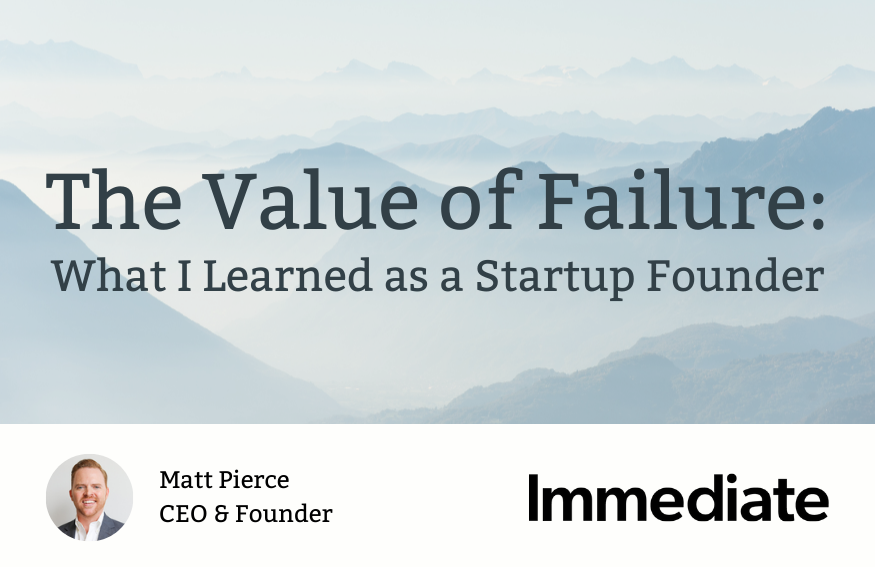Starting a business is complicated and involves a level of planning and goal setting that most of us have never had to do. This article will break down critical parts of establishing company goals to set you, and your business, up for success.
Develop a Business Plan
Your business plan is as much a thought experiment and exploration of what you can do and how you can do it, as it is a plan. It gives you a chance to build out your idea(s) so that it’s robust, multifaceted, and well-considered when it comes time to execute it. You can write a million business plans without spending a dollar (trust me, we have) and you might be surprised by how much it can save you. Read on to see how a business plan is critical to figuring out how to goal set for B2B SaaS. Let’s break down the key components of a solid business plan.
Executive Summary
This may be the hardest part of your business plan, and it should be your final step (even though it comes first). The executive summary breaks down and sums up the entirety of your business plan in a few short pages. Think of it as the elevator pitch you never knew you needed.
Overview and Objectives
This is where you describe your fresh, young, B2B company in detail and make your knowledge about what you’re doing shine. For your overview, consider and clearly answer questions about:
- What problem do you solve for your customers?
- How are you going to solve their problem?
- What is your software going to do for them?
- What are you offering?
- What is the source of your solution?
- Is someone on your team creating it, or are you outsourcing?
- Your potential customer base
- Who are you selling to?
- What businesses is your startup SaaS planning to serve?
- Are they all in the same industry, or does your product appeal to a wide variety of businesses?
- How are you selling it?
- What gives you a competitive edge?
- How do you stand out from your competition?
- What are they failing to do or offer?
Example:
You and your best friend want to start a B2B SaaS company selling software that allows businesses to 1) sync inventory, 2) track online and in-person purchases across locations quickly and easily, and 3) anticipate what to keep stocked where and in what quantities.
Other companies that are selling this kind of software only do two of the three things at a time while maintaining business operations. You have found a way to not only maintain but increase operational efficiency by utilizing blockchain. This software can be used throughout the retail industry where stocking, selling, and shipping inventory occurs.
You and your friend can continue developing the software for now, but in the future, you will hire coders to help you. To keep overhead low, you are selling it as a download. You will have to hire a full staff of tech support representatives to work during business hours and a smaller staff for evenings and weekends.
Since that’s a lot, let’s use our previous bullet points as a rough outline:
- Your potential customer base
- Who are you selling to? → Other companies
- What businesses is your startup SaaS company planning to serve? → Retail
- Are they all in the same industry, or does your product appeal to a broad variety of businesses? → Yes but potentially wholesale as well.
- What problem do you solve for your customers? → Ineffective inventory syncing and management
- How are you going to solve their problem? → Blockchain software
- What is your software going to do for them? → Help sync, track, and manage inventory
- What are you offering? → More effective solution to increase operational efficiency
- What is the source of your solution? → Proprietary software
- Is someone on your team creating it, or are you outsourcing? → It’s being built internally and will be further developed by a larger in-house team in the future.
- How are you selling it? → As a download
- What gives you a competitive edge? → Your innovation
- How do you stand out from your competition? → Your innovation
- What are they failing to do or offer? → Meet all customer needs effectively
Do you see how just outlining your overview sets you up for success? It helps you create the beginning of the framework you need to conceptualize your business and its goals and objectives.
Objectives are the necessary steps you need to take to move forward, and you can find them in the example above. Your objectives include increasing the effectiveness of your product over competitors, which helps you get and keep customers; providing quality customer service (customer retention), and growing to the point where you hire a team of coders to continue developing the software. We’ll revisit objectives later.
Services and products
Describe your product and service in detail, and break it down as simply as possible (this isn’t the place for jargon; if you couldn’t explain it to a kid, it isn’t simple enough). What does your software do? How is it similar or different from your potential competitors? Is it unique enough for patenting, and will you apply for one? If it is truly unique, justify the need for it. Everything that makes your products and services similar or different from your competition informs these decisions.
Example:
Your new software is something new in the market, and you intend to patent it. But other software on the market makes a similar attempt to cover the same needs your software does. What does this mean? It demonstrates that there is a strong market into which you can move and develop. Even though the other software works similarly, it requires dedicated servers that your blockchain innovation allows you to circumvent. This is what makes you unique.
Market Analysis
Your market analysis is where you detail your industry and your competition, utilizing in-depth market research. What does the niche look like? What’s serving your competitors, and how can you improve on it? Do you need to target a submarket that isn’t being served, or is there room for the market to grow? The research you do at this stage will have a huge impact on your ability to grow and succeed.
Example:
The market has a number of competitors. Their software doesn’t have the same capabilities as yours, isn’t as effective, and, because it requires dedicated servers, it’s more expensive and vulnerable. Your software offers a number of improvements on existing options and has the potential to be low-cost to both you and your customers.
Marketing and sales
Based on your market analysis, define your marketing and sales strategies. You’ve carved out who your customers are going to be and what they are looking for, so how will you market your product to them and make sales? How will you retain customers?
This is an investment you’re making in your company. The research you did for the last section is the bedrock for this one. Successful marketing will allow you to reach your customers effectively and reliably so you can sell your product and service. If this isn’t something you’re capable of doing on your own, you can hire an expert to do it for you, though that will increase your starting costs.
Example:
You market your software first to companies that offer both in-store sales and online purchases, as it holds the most value for them. You provide two of the three features for free (and include tech support during business hours), allowing them to see how much faster and more effective your software is than what they are already using, and then offer a subscription for the full software. The subscription includes regular updates with new features, bug fixes, and security updates, as well as 24/7 tech support.
Organization and Management
In this section, it’s time to get into the nitty-gritty details of organizational structure. How is your team going to manage different aspects of your startup? Are you incorporating as a C-corp or S-corp? LLC?
Example:
You decide your startup is better suited as a C-corp. You and your best friend are the head coders and will lead the team of future coders together. You plan to work with a business manager to staff your tech support and head your human resources, and an accountant to handle checks and balances, like payroll and tracking expenses.
As your company grows, your friend takes over the coding department and promotes one of the coders to Senior Coder, and they run the department together. You focus on handling business management, becoming the main person all of the departments answer to. Each of your departments should establish a team and department meetings.
Financial Projections
Break anticipated finances for the next year down into the next three quarters, and then by month. Include income, expenses, and other metrics and define them as clearly as possible to show the financial future of your business. Tell the story of your company’s first steps toward stability.
Example:
Every month for the first three months, you and your friend cold call potential customers from an office space you rent and send out an email campaign designed by a freelancer. The space, its equipment, utilities, your website, and your tech support team are your only expenses for those first months. By the end of those months, you will have X number of subscribers. With the money you’ve made and a loan, you are capable of making the expansions you planned on, including more staff, a larger office, and a broader marketing campaign spearheaded by your new marketing department. Your business is financially sustainable by the end of your first fiscal year.
Setting Business Goals
“Finally,” you think, “you’re finally getting to the point!”
Believe it or not, everything leading up to the following point in the article has either been about setting a goal of providing the framework to set your company goals.
Long, Medium, and Short-term Goals
Long-term goals are years down the road and are typically large milestones. Think of these like five- and ten-year plans (or three- to five-year plans if you’re a startup). These can be rough at times, painted with broad strokes, and are dependent on reaching medium-term goals. Medium-term goals are made by breaking larger goals down and finding reasonable halfway points; these are dependent on reaching short-term goals. Finally, short-term goals are from a few weeks to a year-long and are immediately actionable. These are what keep momentum and motivation moving forward as you build your way to your long-term goals and success.
SMART Goals
SMART is an acronym for goal setting, and SMART goals challenge you to work out your concepts and plans as you begin. They require that goals are Specific, Measurable, Achievable and Attainable, Relevant, and Timely.
Specific
Setting goals that are too broad can be more of a barrier than a benefit when planning.. Consider this: You decide you want to make a new walking path. Where are you making the walking path? Is it public or private? How long is the path going to be? Specific goals create a firm foundation at every stage.
Measurable
Measurable goals allow you to evaluate your progress as you move forward. Specific and measurable goals allow you to determine what steps you need to take to create the path you’re paving. Are you hitting the milestones you need to achieve the goals you set out? Do you need to reconsider your strategy to get where you’re trying to go?
Ambitious but Attainable
Your specific and measurable goal should be realistic and attainable within your time frame. You can certainly make a walking path in the forest by walking it, but will the city and county allow you to build a bridge? Similarly, planning for monumental growth may feel good when you’re a budding startup, but it can be bad for morale if you move forward and fail to meet the necessary milestones at every turn.
Relevant
Your company goals should directly relate to company values and long-term objectives. It might be nice to have a coffee stand in the woods, but what does that have to do with your plans to make a walking path? It might be cool for your business to own a newspaper, but unless its endeavors are already media-oriented, a newspaper doesn’t make sense. Instead, a newsletter could offer a chance for you to get the word out and scratch that journalistic itch.
Timely
Finally, SMART goal setting includes an end date that is both achievable and relatively challenging as a means of staying motivated (remember, Ambitious!). If the deadline is too tight, it becomes unattainable. If it’s too loose, it can lead to procrastination.
Example:
Your company’s goal is to have the lowest carbon footprint in the industry by 2035.
It’s Specific and Measurable: lowest carbon footprint in the industry (easy to compare to other companies and regularly measure against them).
Ambitious and Attainable, Relevant: it pertains to company values (eco-friendliness), and Timely: by 2035.
You have a SMART goal, but you still don’t have a clear idea of how you’re going to get there. With that in mind, let’s move on to our next acronym and back to the importance of objectives in setting goals.
Objectives and Key Results (OKRs)
OKRs are a means of goal setting, developed initially by John Doerr and popularized by Intel and Google, that make it easier to keep track of progress and forward momentum towards company goals. OKRs have a clear objective that can be measured, with key results being the means of accomplishing and measuring it. Any potential objective has key results that allow for tracking how much has been achieved.
That’s why the standard formula for goal setting using OKRs is to have one umbrella objective and three to five key results. Each of the key results directly correlates to the objective, has a measurable goal, and a stated deadline. Does any of this sound familiar?
SMART Goals vs. OKRs
Your sense of deja vu is entirely understandable, as OKRs and SMART goals are cut from the same cloth. The short and simple way to explain the difference is that SMART goals help your startup define its objectives, and OKRs help you get from where your business is to where you want it to be. Let’s use our SMART goal from earlier as our new objective.
Example:
O: We will have the lowest carbon footprint in the industry
KR1: Utilize solar panels for 100% of company power by 2025
KR2: Move to 100% recycled products or digital marketing by 2030
KR3: Reduce the import of company tools by 100% by 2035
SMART goals and OKRs come together to create a new picture and depth to goal setting for your startup. Your business plan is your foundation; it lends concreteness to the ideas you’re putting forward as you develop your company goals. Goals domino into one another, with small, short-term goals leading toward the success of larger long-term goals, all of which are deepened by using the SMART methodology. Finally, your key results are your specific stepping stones to reach the objectives or goals you’ve put forth.
Final Thoughts
Now you know that before thinking about goal setting, you must devise your company’s business plan. And you just learned how to do that properly. You also learned about SMART goals and OKRs.You can feel confident that you own the right tools to make your idea grow and flourish.




